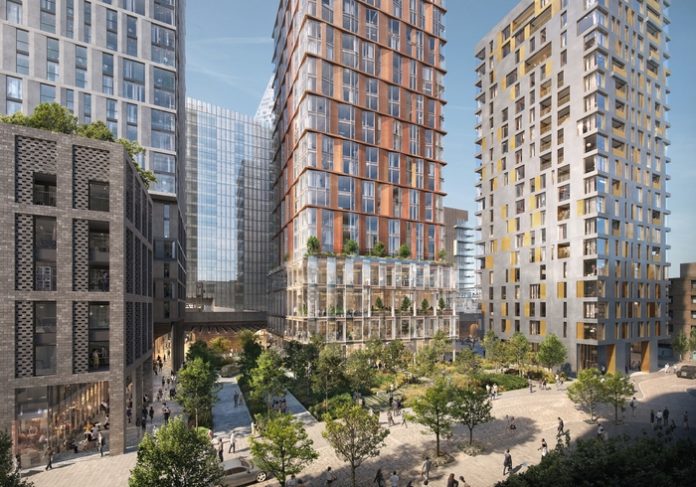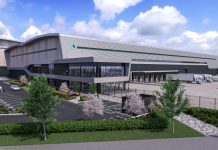Native Land and its partners last week unveiled its sustainability strategy for Bankside Yards, central London, which will make the 1.4 million sq ft mixed-use development the UK’s first major regeneration project with zero emissions in operation.
Bankside Yards will be served by a low-temperature, all-electric ‘5th Generation’ energy network on a scale not yet seen in the UK, to balance thermal energy across all of its 8 new buildings and 14 restored railway arches. Each building will ‘extract’ or ‘reject’ energy into a single thermal network serving the entire development, significantly reducing operational energy.
Across the Bankside Yards site, the use of all-electric energy using heat pumps, optimised facades and high efficiency building services systems, combined with Native Land’s commitment to a green energy purchasing agreement, will achieve net zero carbon in operation.
These measures form part of a raft of sustainability features across the five-acre development, including:
- ‘Intelligent’ data-led construction which learns as it goes. By collecting data throughout construction and applying artificial intelligence, engineers will learn how to design more efficient buildings in future phases of the development, to reduce embodied carbon.
- The only underground robotic logistics network serving a major mixed-use development in central London, with ‘smart’ tugs distributing goods and waste within the estate, minimising disruption, congestion and truck movements. This means there will be no ground-level loading bays, releasing over 10,000 sq ft (8% of total public realm) of additional above-ground space for biodiversity, public space, amenity and active frontages.
- Creating 3.5 acres of new ‘greened’ public realm from a former brownfield site, increasing biodiversity, planting 150 new trees of 20 different species and creating biodiverse roofs on six of the development’s eight buildings.
Bankside Yards, a joint venture between Native Land, Amcorp Properties Berhad, HPL and Temasek, is a £2.5 billion mixed-use development that will connect London’s South Bank with Bankside for the first time in 150 years. It includes more than 350,000 sq ft of offices, 50,000 sq ft of amenities, bars, restaurants and cultural space, and a 5* urban resort hotel. The development will also deliver more than 700 apartments, including homes for private sale and rent, on-site affordable housing and a financial contribution of at least £65 million to Southwark Council to deliver new housing across the borough.
Alasdair Nicholls, Chief Executive of Native Land, said: ‘At Bankside Yards we are using energy-efficient technology on an unprecedented scale, aiming to set a new benchmark for sustainability in large, mixed-use regeneration schemes. This is part of an integrated, site-wide, multi-building strategy for carbon reduction and biodiversity.’
Compared with the GLA planning policy target of 35%, Bankside Yards will deliver over 50% reduction in CO2. The carbon reduction achieved is 40,000 tonnes over 30 years, the equivalent of 20,000 trips from London to New York on a Boeing 747.
Sampson House and Ludgate House, which previously occupied the site, were constructed when thermal performance was well below today’s standards. They also acted as a barrier to an important river frontage and provided very little biodiversity. Bankside Yards will create new buildings using highly-efficient, low-carbon construction techniques, in addition to the creative reuse of 14 historic railway arches.
Construction of Bankside Yards West started October 2019 and the first building, the 223,000 sq ft Arbor office building, is due for completion in mid-2022.
Bankside Yards’ masterplan architects are PLP Architecture, Sweco are M&E and sustainability consultants, AKTII are structural engineers and landscape architects are Gillespies.



















